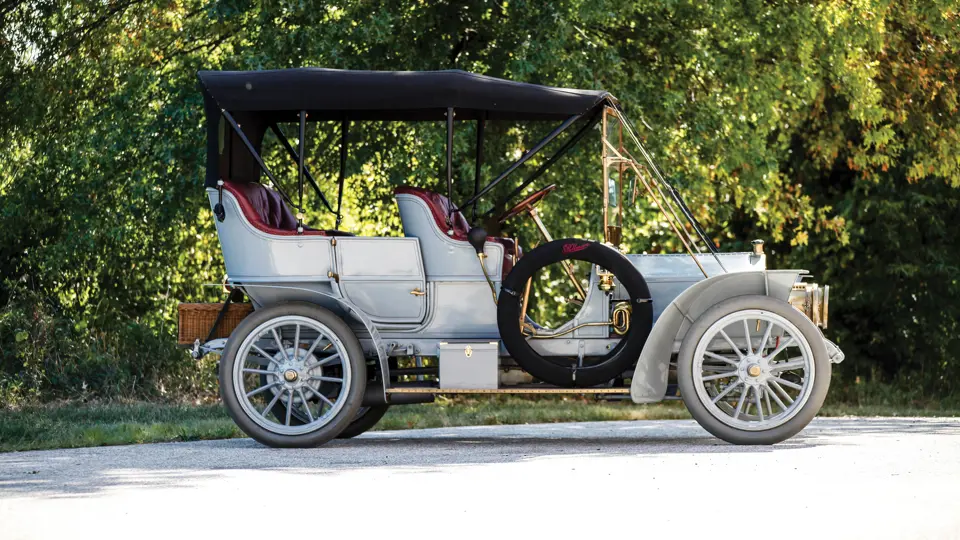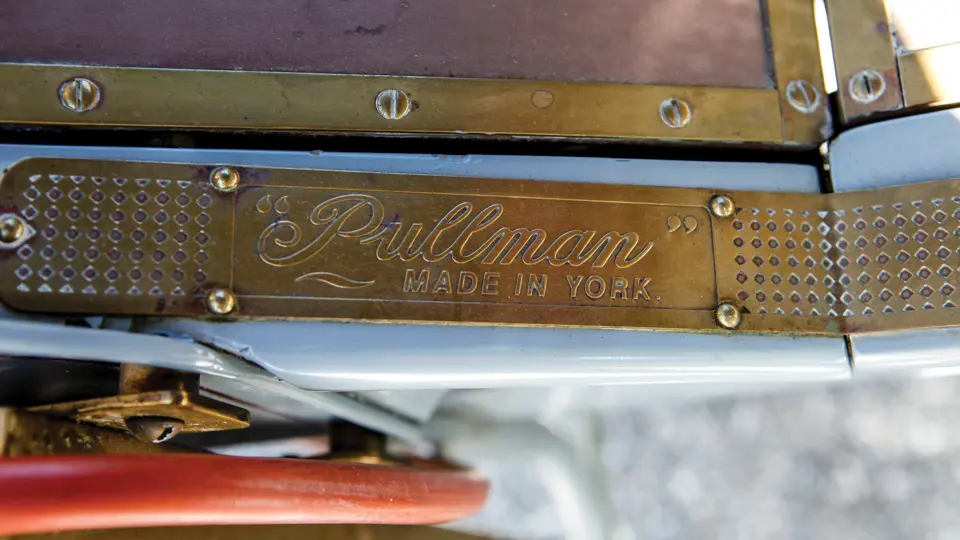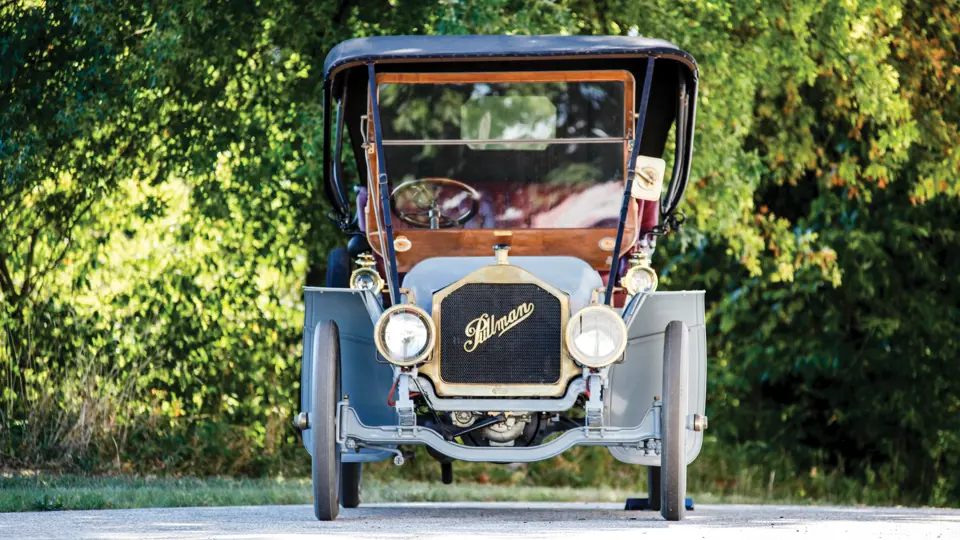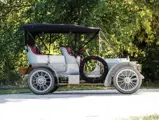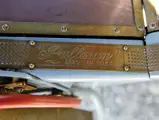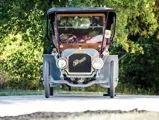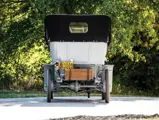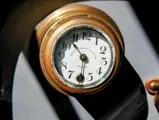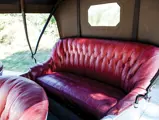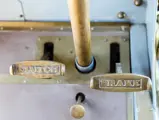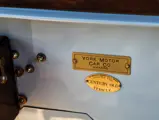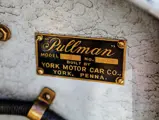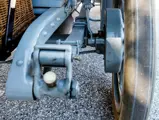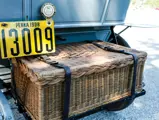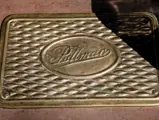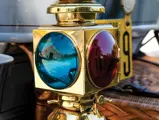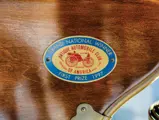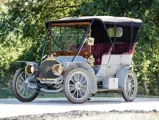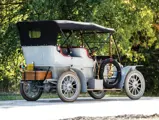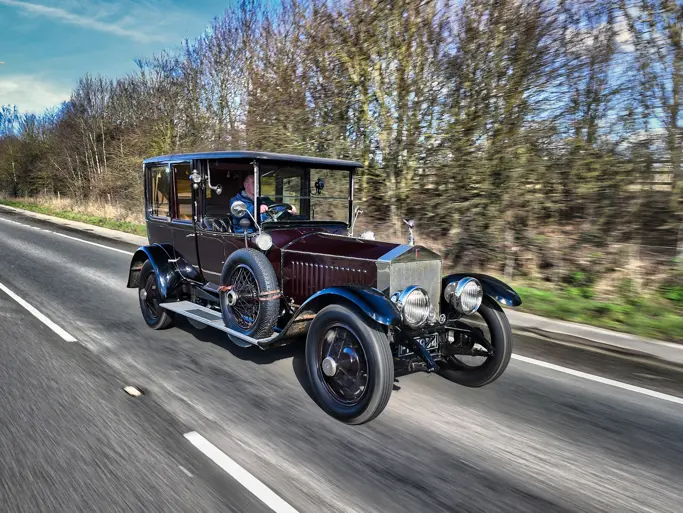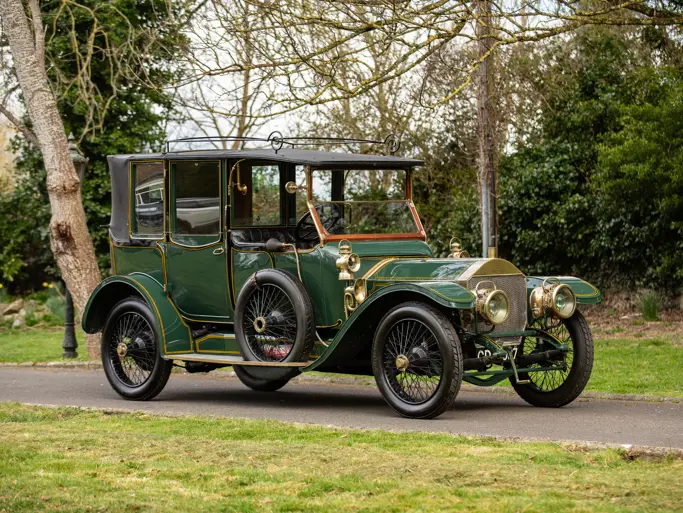20 hp, 165.7 cu. in. L-head inline four-cylinder engine, three-speed manual transmission, solid front axle and live rear axle with semi-elliptical leaf springs, and two-wheel mechanical drum brakes. Wheelbase: 100 in.
In 1903, Albert Broomell, a York, Pennsylvania inventor, constructed a two-cylinder, six-wheeled car with equally spaced axles. He called it “Pullman,” after the comfortable railroad sleeping cars, and the theory was that extra axles would give more comfort. Instead, the arrangement proved extremely impractical, since the front- and rear-most axles would, on bumpy roads, occasionally leave the ground, the car could become stranded. His one prototype was reportedly disassembled, and Broomell moved on to other ventures.
Early in 1905, he teamed with Samuel Baily, a carriage builder, to test the market for a new car, to be called “York,” the Pullman name having fallen into disgrace. The enlisted James Kline, a mechanic from nearby Harrisburg, and formed the York Motor Car Company. The first cars were demonstrated at 1905’s York County Fair, by which time the Pullman name had been resurrected.
They were big, expensive cars, selling for upwards of $1,850, with shaft drive and engines from 20 to 40 horsepower, at a time when a Ford could be bought for $600. Runabouts and touring cars were offered, on wheelbases of 93 to 103 inches, and they sold reasonably well for the time, though annual production never breached 5,000 units.
This car, the oldest restored Pullman known to survive, was purchased by the owner’s father from historian and collector Fred Rosenmiller of York, Pennsylvania, where the car was built. Although the restoration was done quite a few years ago, it was done to show standards, and the car has been carefully maintained and stored in the intervening years. The engine and transmission have been rebuilt, and the car runs and drives well.
It was awarded an AACA Grand National First Prize in 1997 and given Preservation status the following year. In 2005, it earned a Palmetto Award at the Hilton Head Concours d’Elegance in South Carolina. Other noteworthy appearances have been at the York Heritage Trust Concours in its home town, and at the invitational Amelia Island and Pebble Beach Concours.
Although now an older restoration, the car presents well. The light grey body contrasts nicely with deep red buttoned leather upholstery, highlighted by brass lamps and radiator shell. The black canvas top is in very nice condition, and a wicker hamper is strapped to the rear. The undercarriage is clean and painted body color; the engine compartment is tidy and correctly detailed. There is no instrumentation, save for a dashboard-mounted key-wind clock. The brake and clutch pedals are cast brass and labeled, and the car carries its original serial number plate, Selden Patent plate, and a Century Old Vehicle plaque from the Horseless Carriage Club of America.
Pullman production for 1908 was 873 cars. The odds of there being another survivor, in any condition, are very, very slim, making this Pullman a near-unique acquisition.
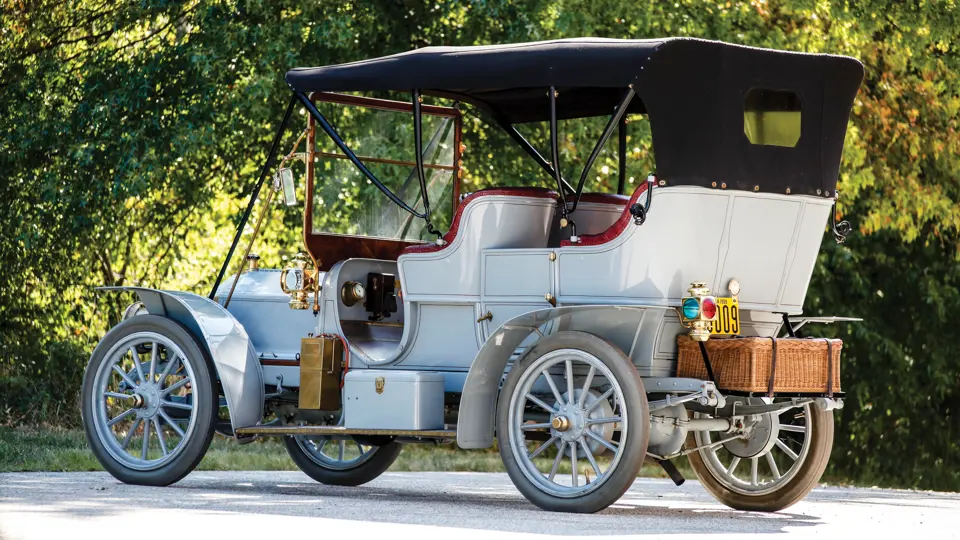

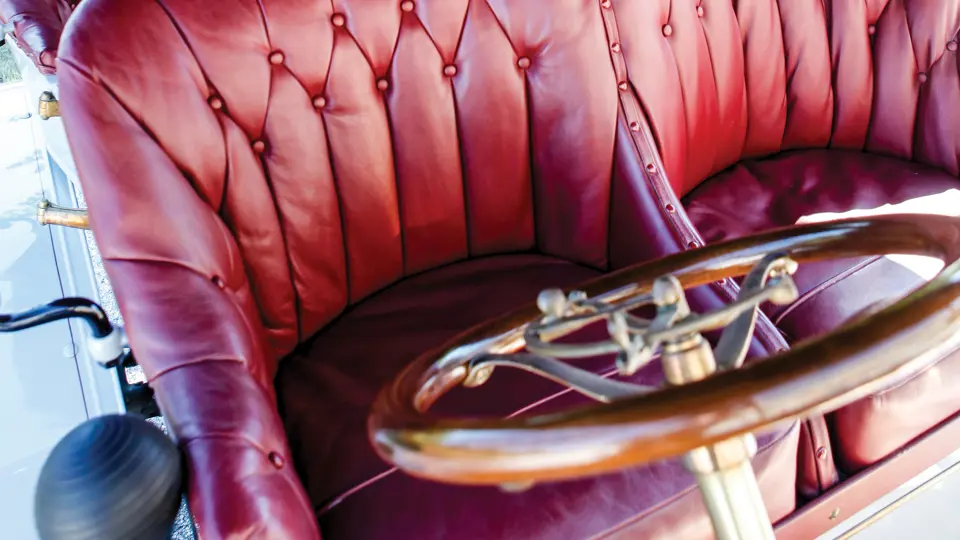

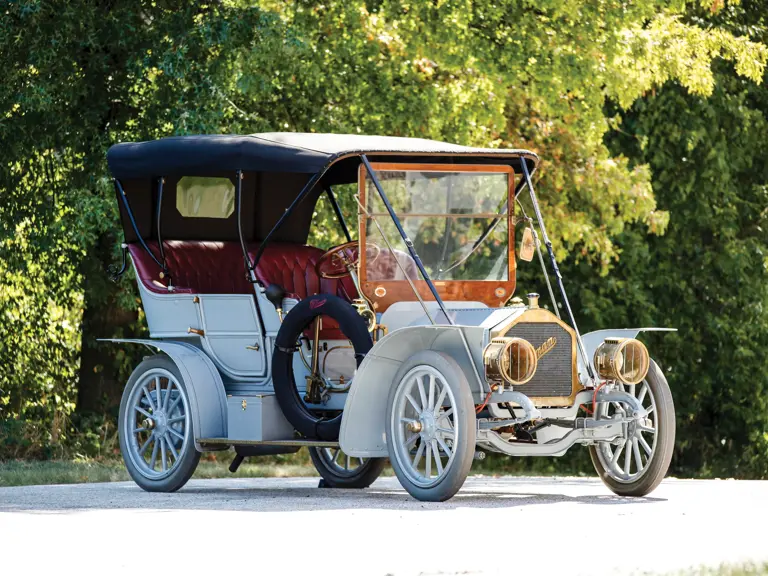
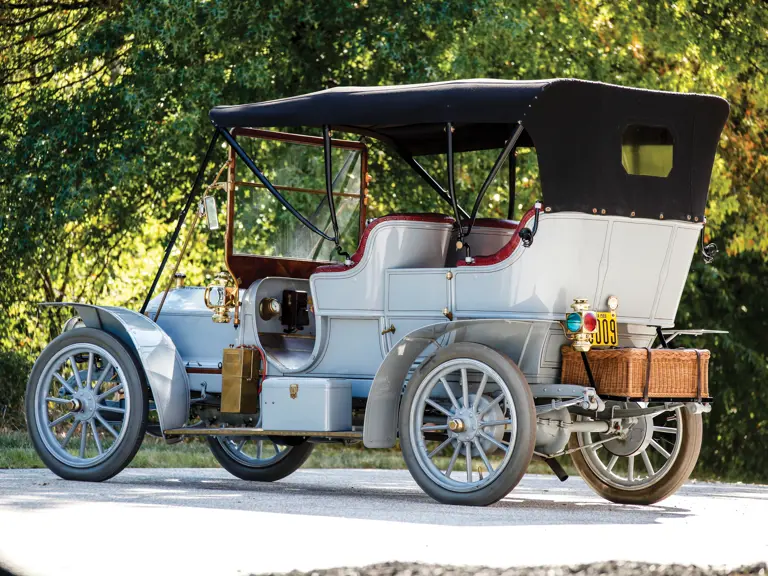
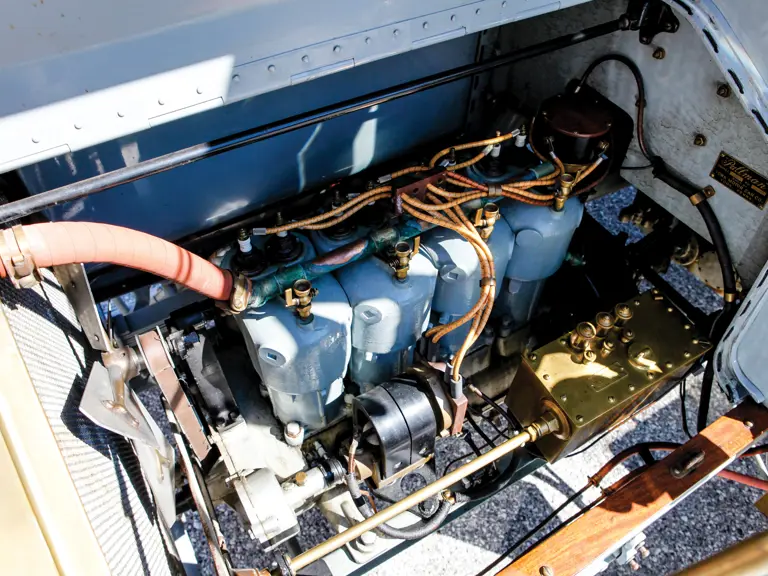

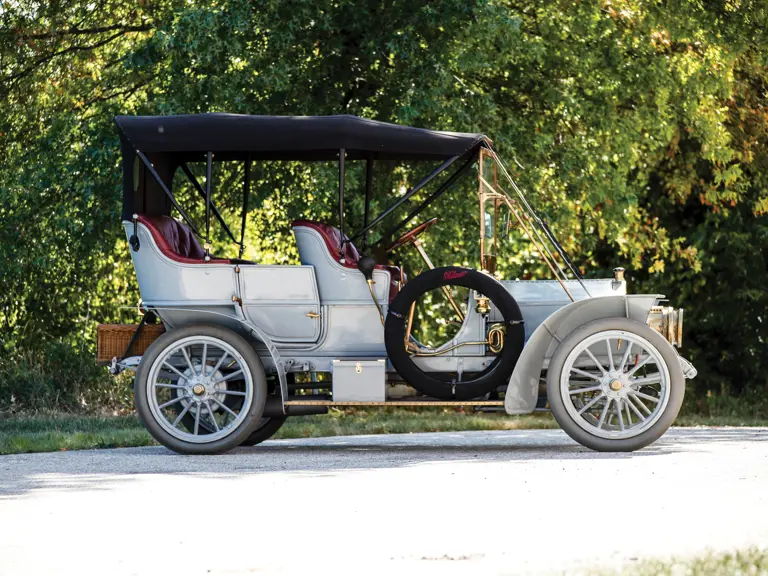
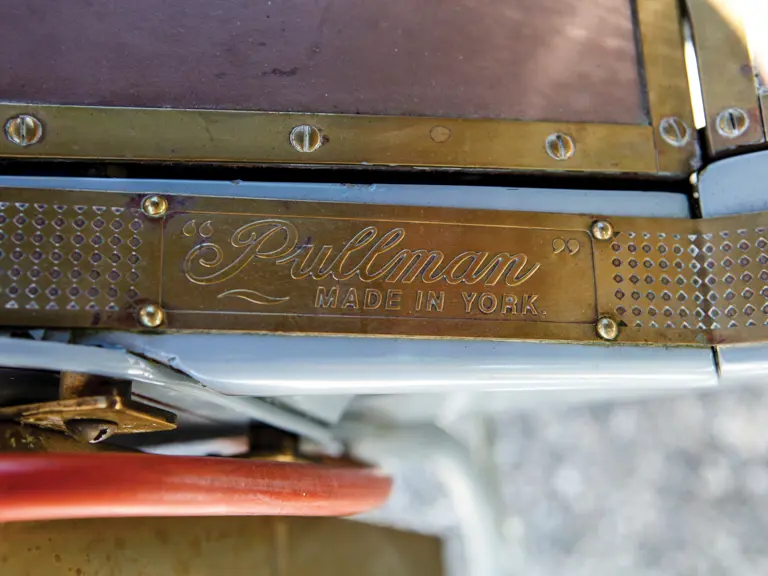

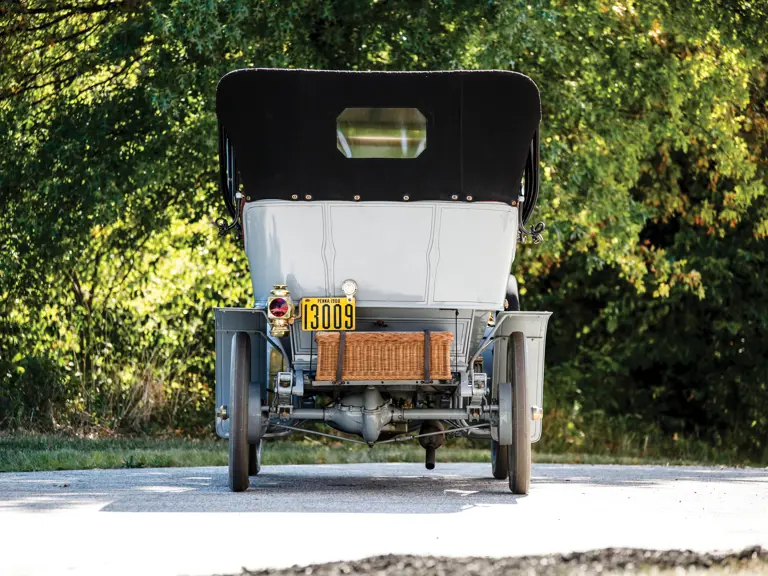
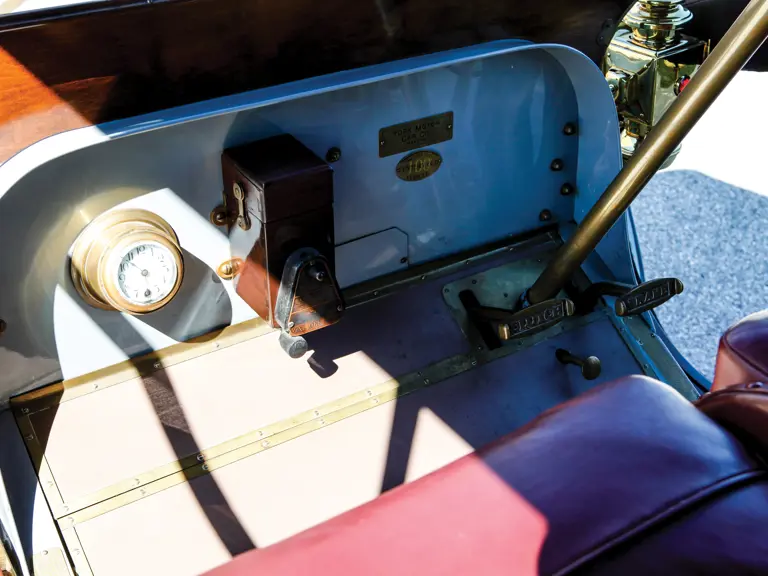


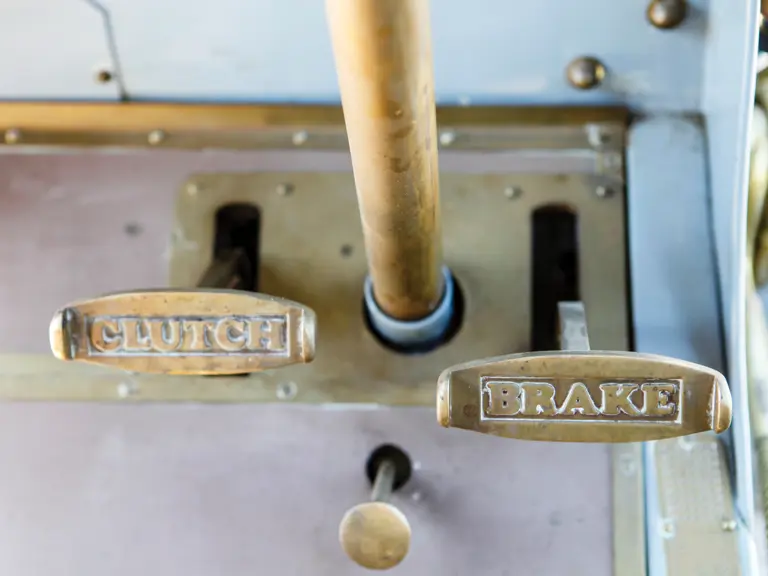
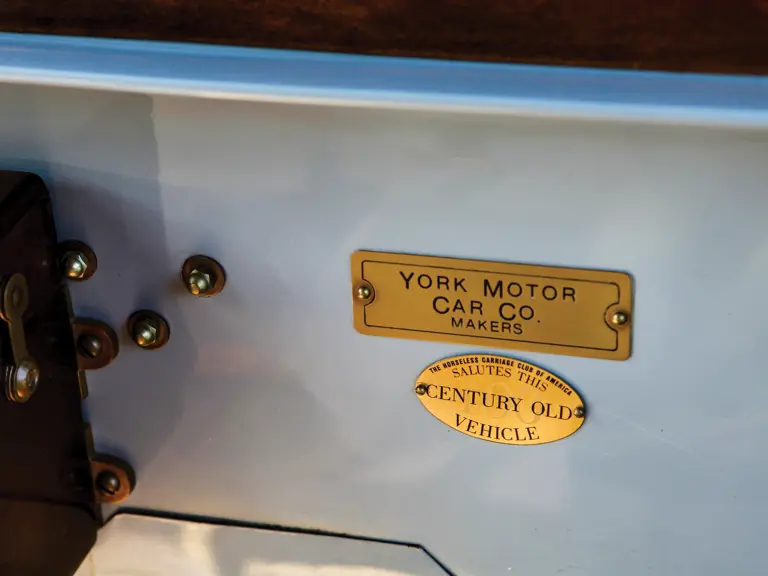
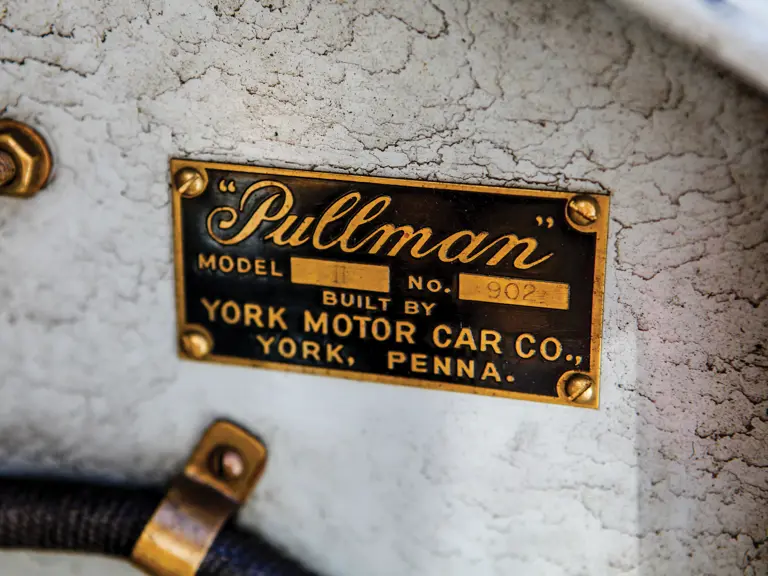

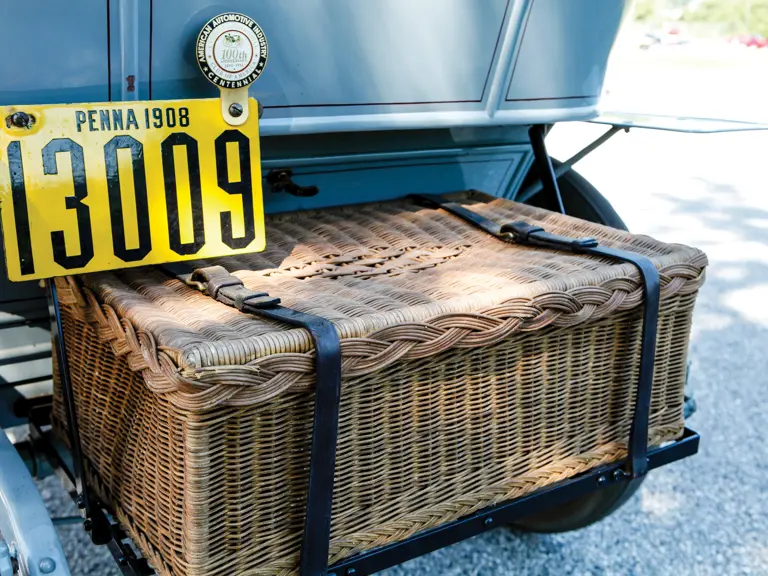
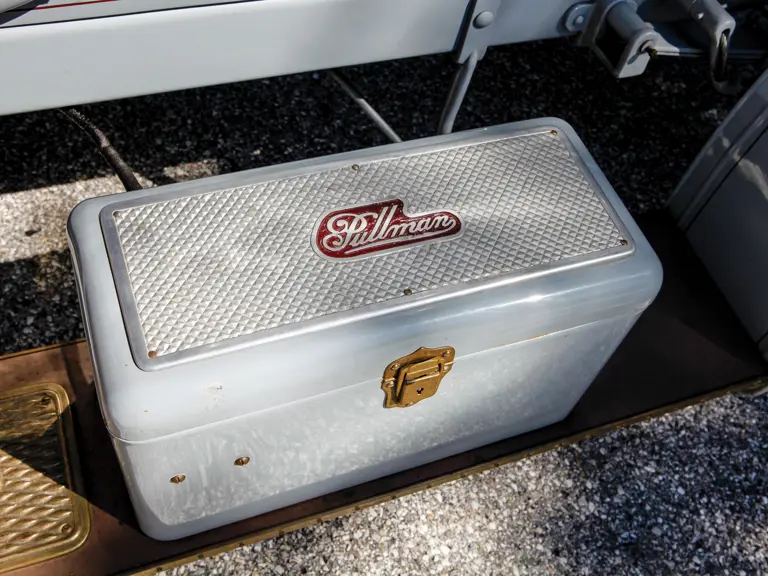

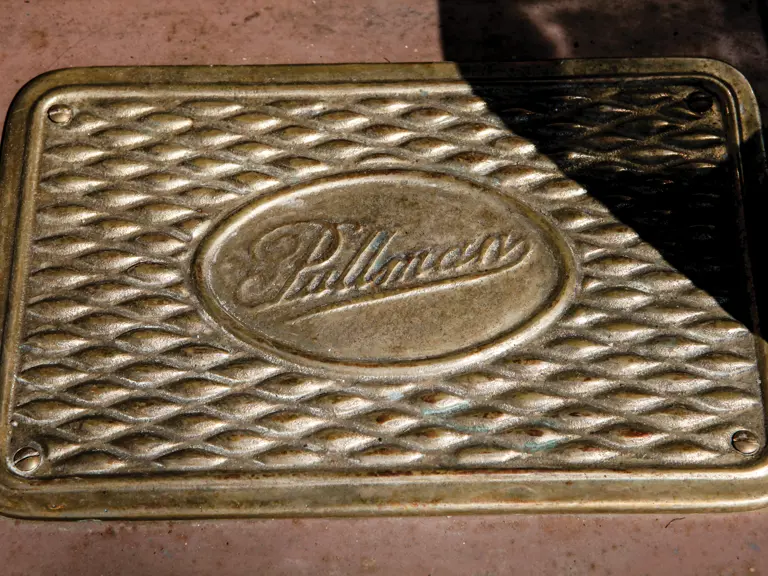
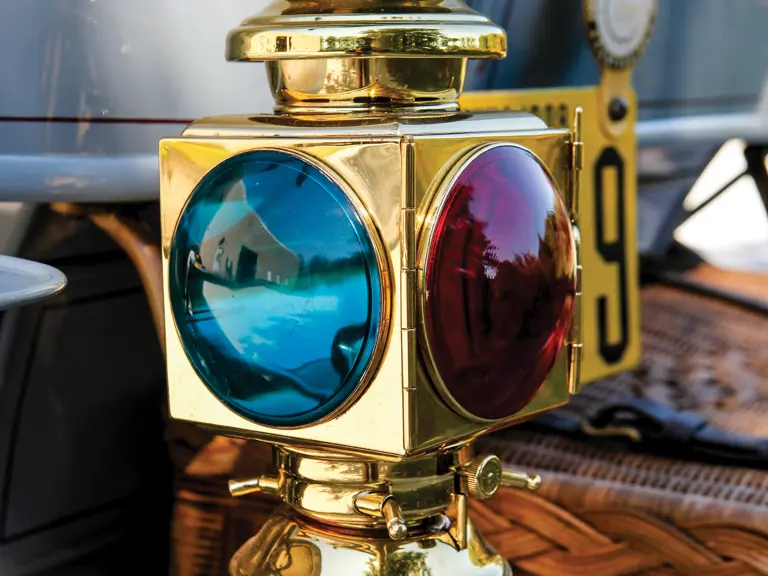

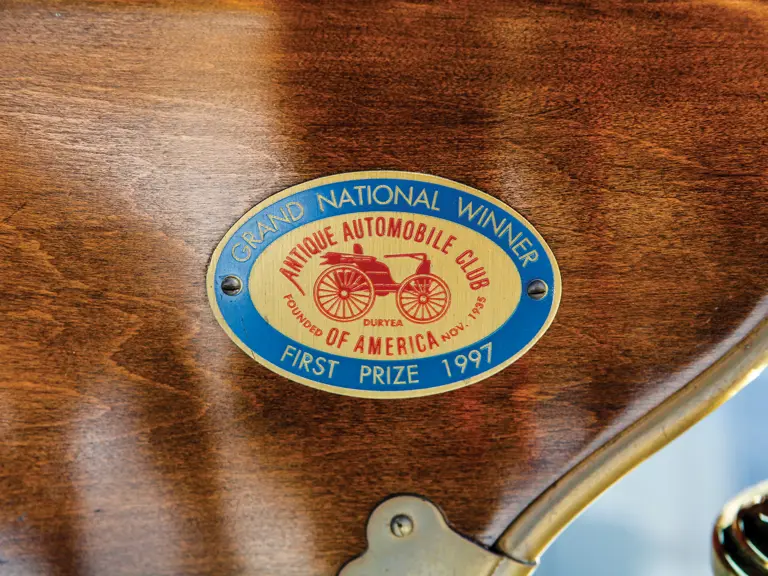
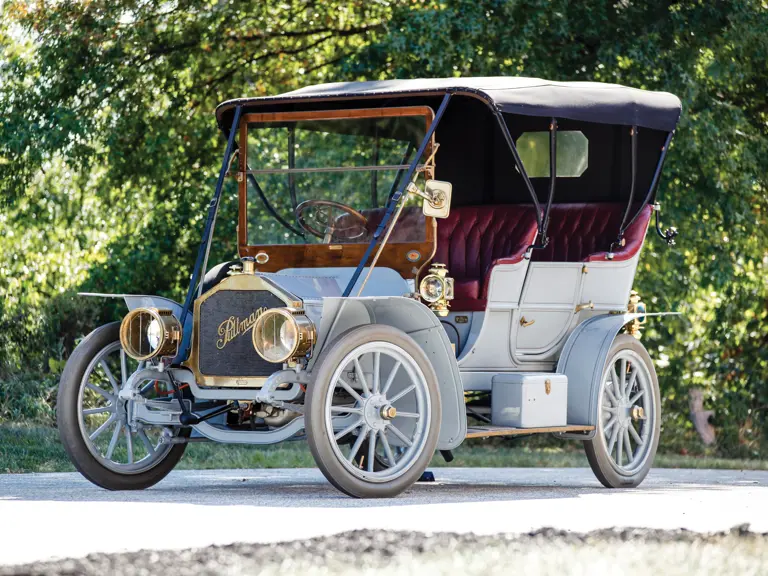
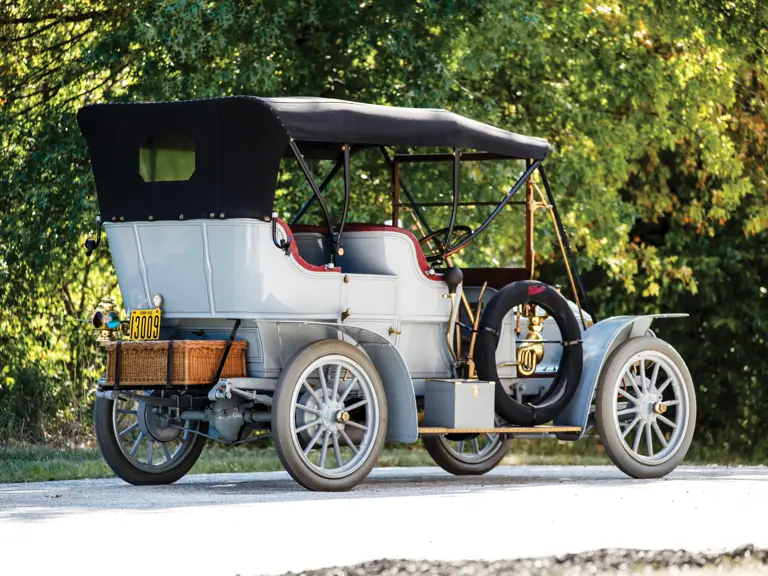
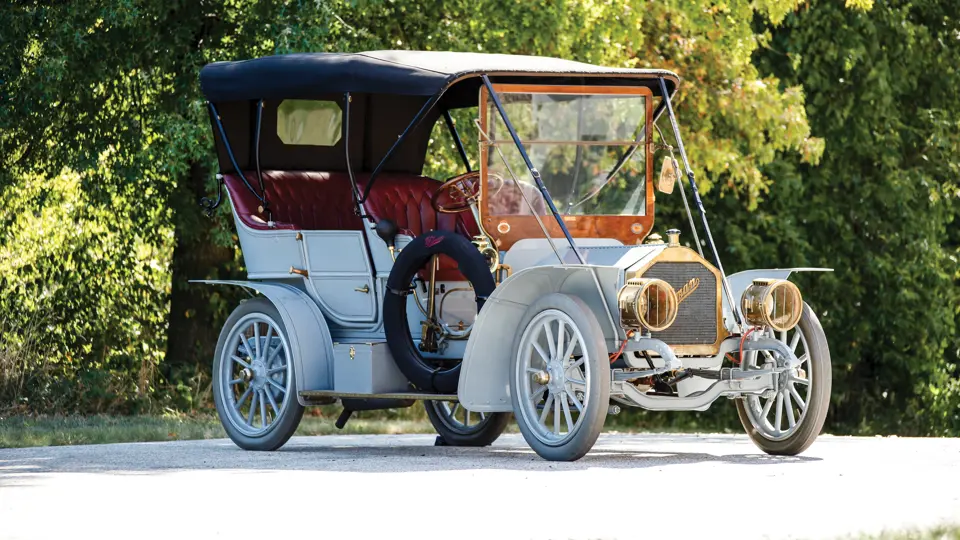
 | Hershey, Pennsylvania
| Hershey, Pennsylvania
